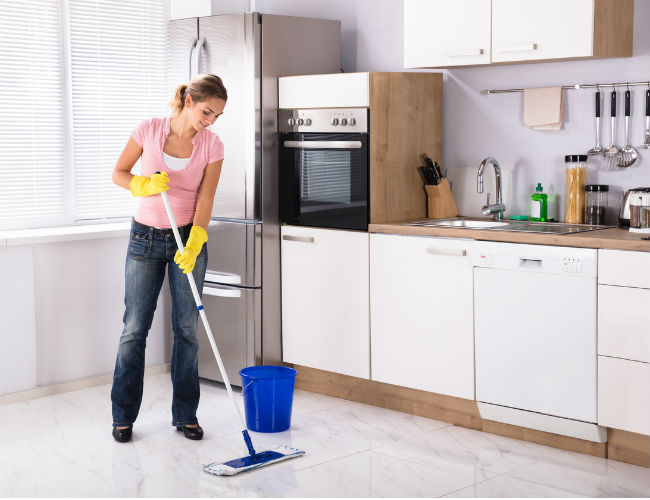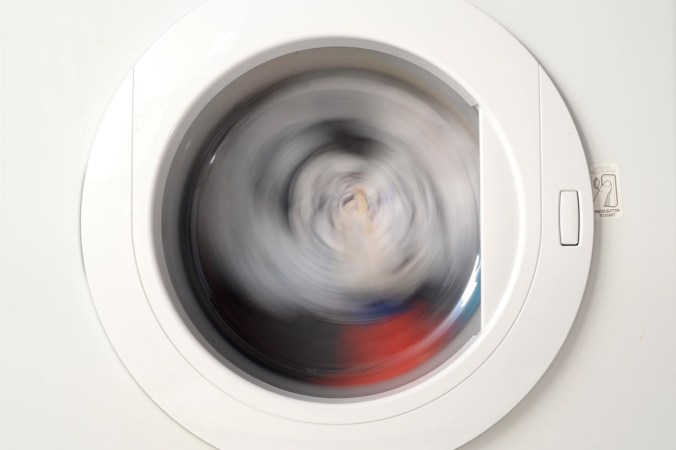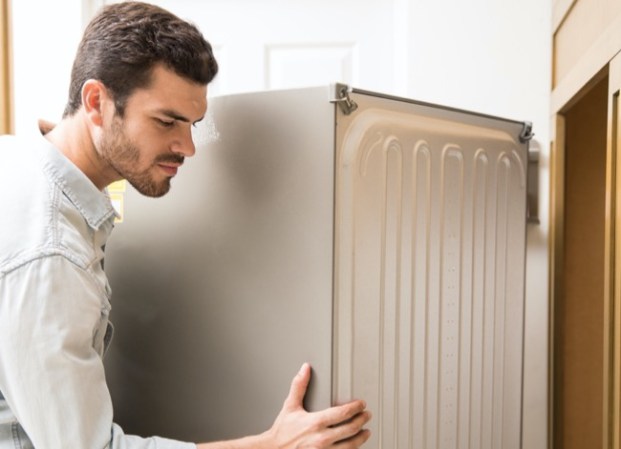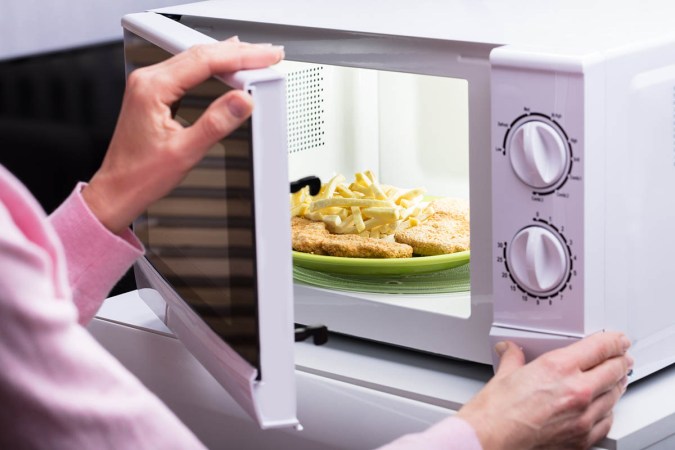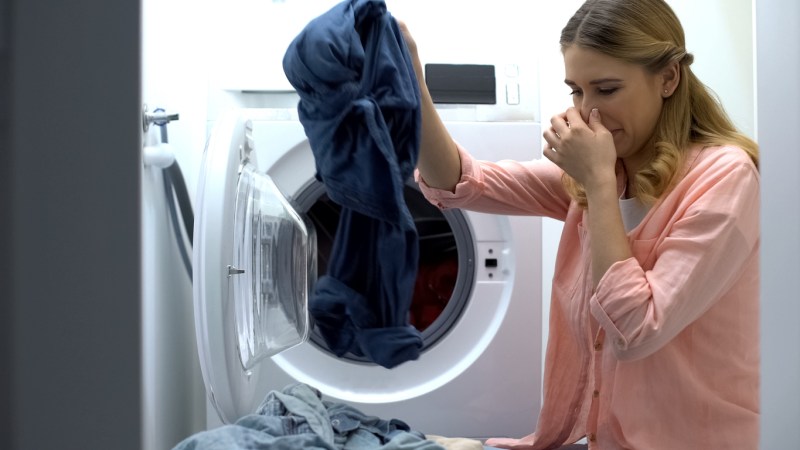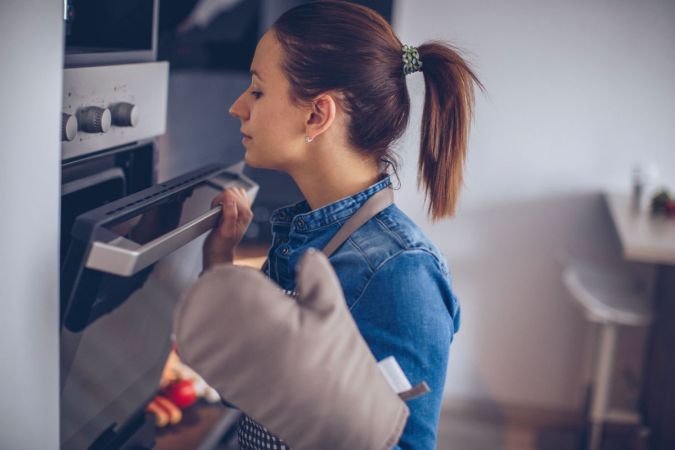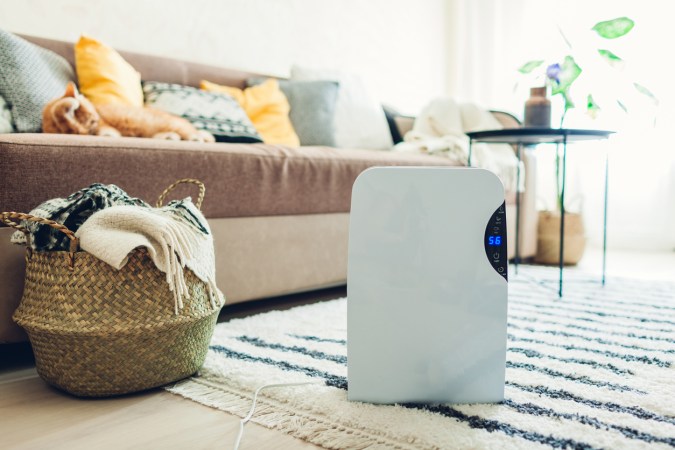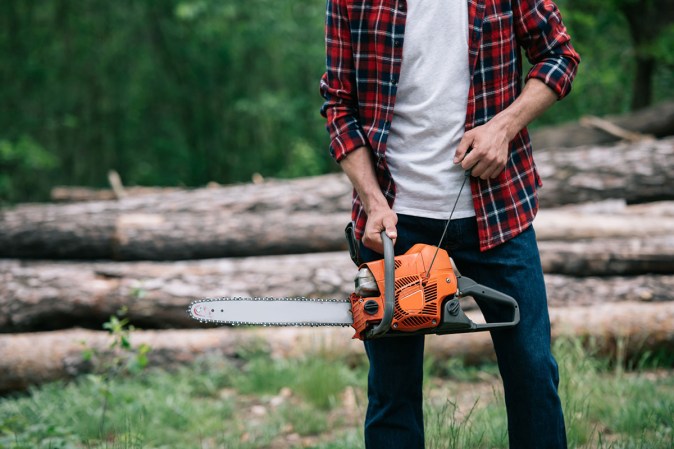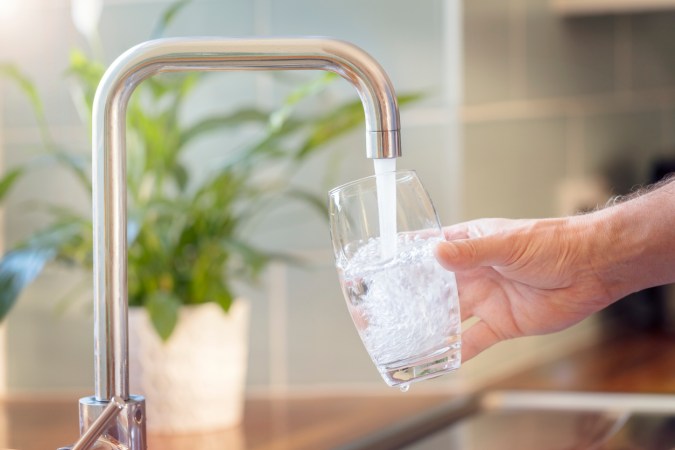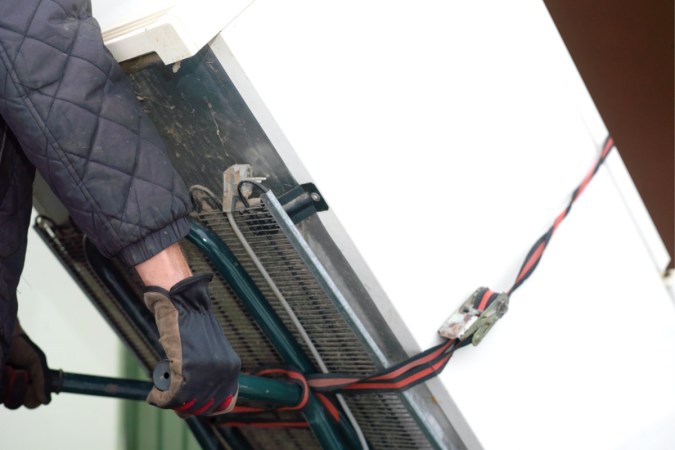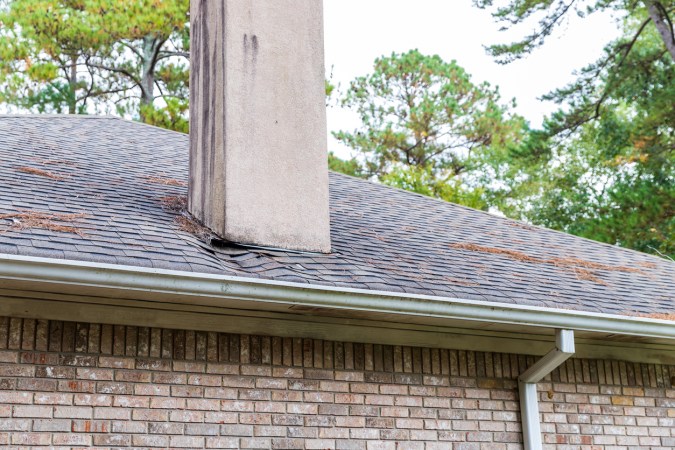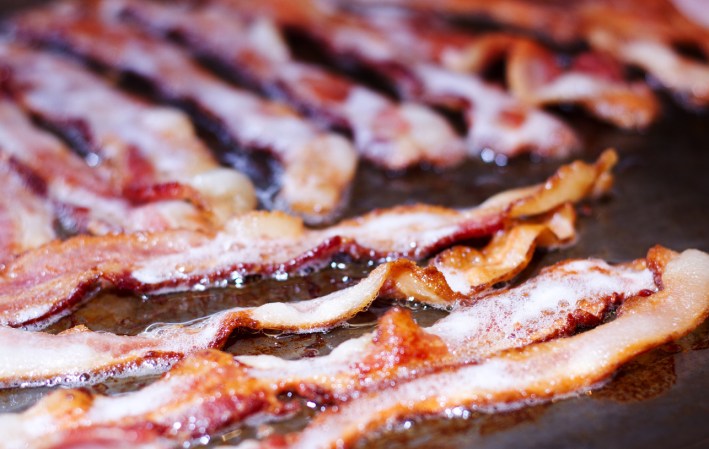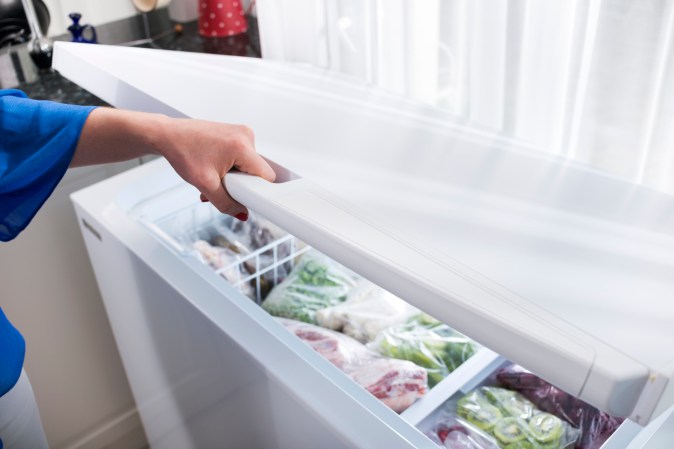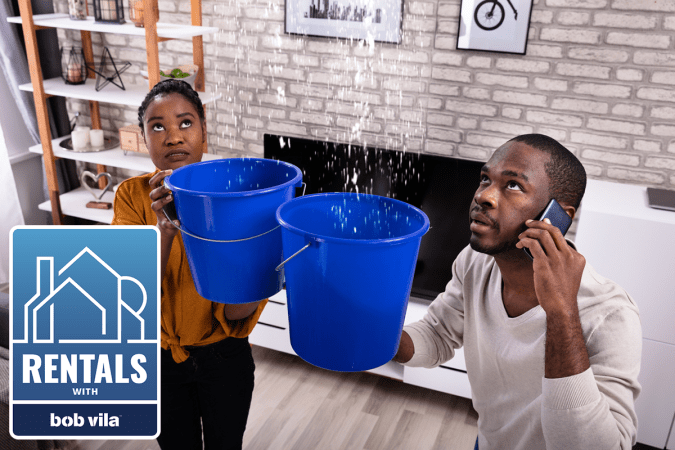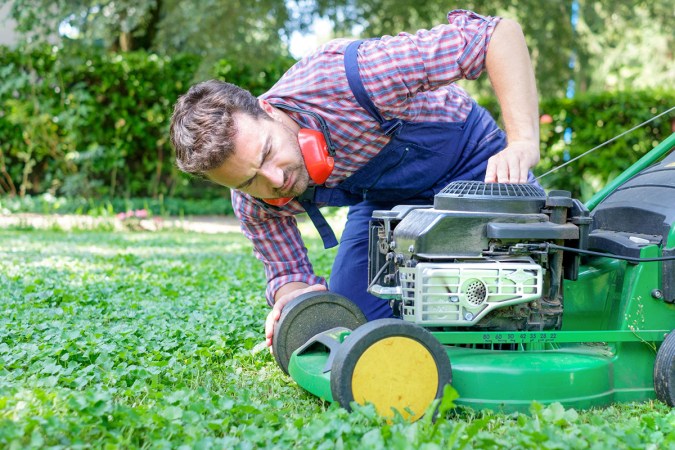We may earn revenue from the products available on this page and participate in affiliate programs. Learn More ›
Q: There’s a small puddle on my kitchen floor that seems to be coming from my refrigerator. Why is my refrigerator leaking water, and how can I fix it?
A: Sounds like you’ve got a mess on your hands! You could be dealing with any number of issues but it’s probably one of four common scenarios, all of which you can remedy yourself without calling for professional repair. Let’s run through the likeliest possibilities and see which one’s wreaking havoc in your kitchen.
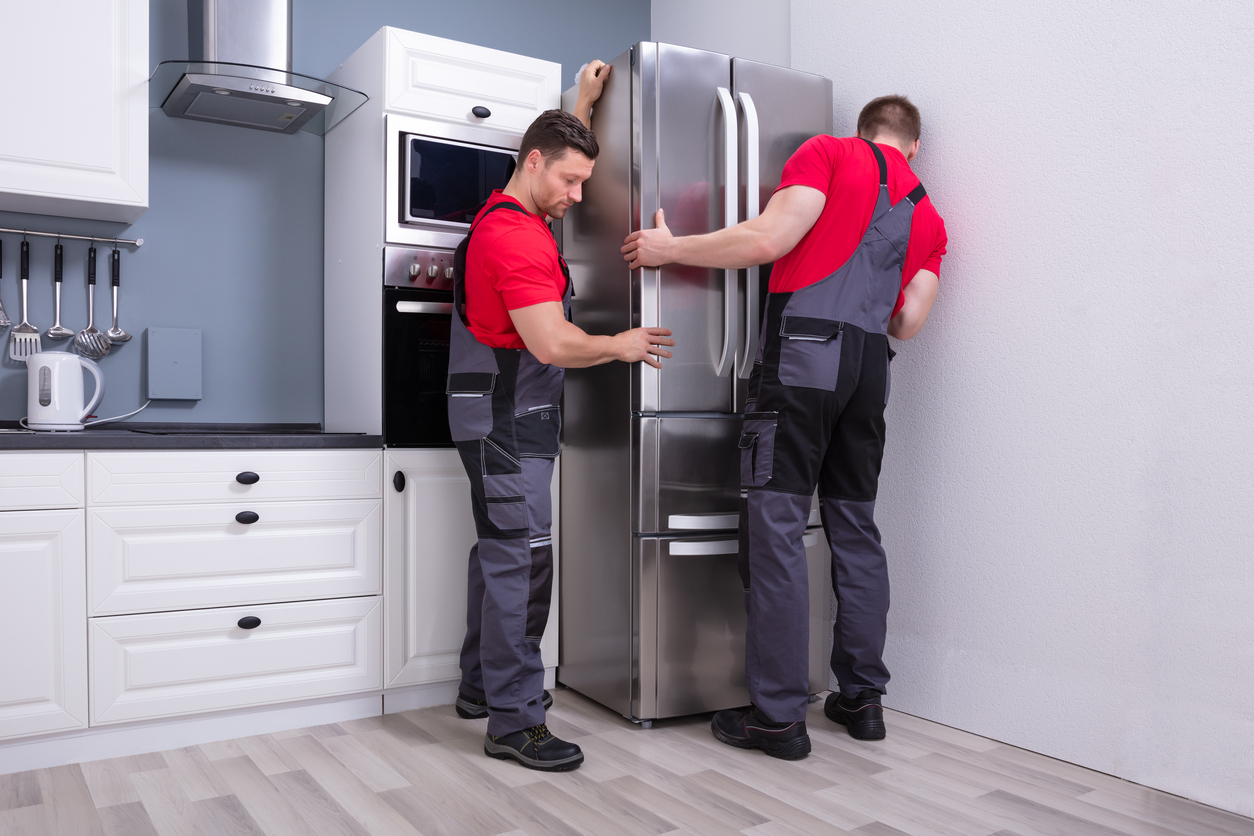
Your refrigerator might not be level.
If you’ve just purchased a refrigerator, moved into a new home, or recently remodeled your kitchen floors, there’s a good chance that moving the appliance has caused it to start leaking water. Now, a fridge isn’t meant to be perfectly level; in fact, the front actually needs to be between a quarter-inch and half-inch higher than the back. This slight front-to-back tilt allows coolant (the liquid responsible for keeping the appliance cold) to flow freely. When coolant can’t easily circulate, it may pool in the pipes and force the fridge to work harder than necessary to pump it. This extra work creates extra condensation around the coils that may end up dripping water on the floor, which could look as though your refrigerator is leaking.
To remedy the situation, place a level on top of your fridge (not on an inside shelf, which might be uneven on its own) to confirm that it’s even-keeled from left to right. Then turn the level so that it runs front to back in order to verify that the appliance stands just slightly higher in the front.
If you need to do some adjusting, remove the grill from the bottom front of the fridge and adjust the legs or rollers according to the instructions provided in your owner’s manual. Depending on the refrigerator model, this adjustment may require a wrench or screwdriver. Aim for a ¼ to ½ inch rise in the front, and check the level again. Be prepared to phone a friend in case the back legs or rollers need adjusting, too, since that will involve unplugging the appliance and pulling it away from the wall.
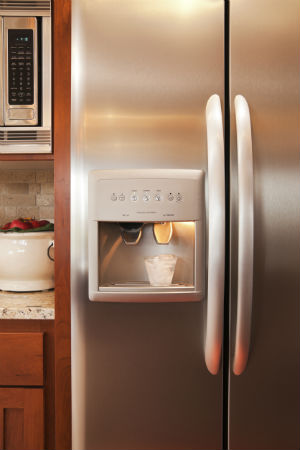
Your fridge might have a blocked defrost drain.
A blocked defrost drain—which could be caused by a food particle, a stack of frozen dinners, ice, or some combination—is another problem that can cause your appliance to work overtime. On most refrigerators, the drain is accessible at the inside back of the freezer. As is the case with an improperly leveled fridge, a blockage in this drain can also cause condensation to collect on the coils and water to drip onto the floor. Unclogging the drain should eliminate the leak.
Open the freezer and make sure that nothing is blocking the defrost drain along the back wall. If it’s obstructed by items in the freezer, simply move things around until air can flow freely, and then give it a day or two to see if the issue is resolved. If puddles persist, it could be that something smaller, like crumbs or ice, is causing the clog. In either of these cases, you’ll need to transfer your food from the fridge and freezer to a mini fridge or chest freezer and unplug your refrigerator. Next, remove the plastic plate over the drain hole (your appliance manual may have tips for this) and use a turkey baster or funnel to flush warm water down the defrost drain. This should clear the drain of debris and allow your unit to function normally once more.
RELATED: Solved! This is How Long Refrigerators Last
There may be a problem with the water supply line.
If your fridge is level and your drain is unobstructed but you still have what seems to be a leaking refrigerator, the problem might lie with your water supply line. (Other signs that point to a problematic water line: Wonky ice production and slow water flow on command at the fridge door.) Here, too, you’ll need to unplug the fridge before inspecting it further. Before you do that, move your perishables to cooler or another freezer for the time being.
Pull the refrigerator out from the wall, and inspect the plastic hose that runs from your ice maker and water filter down the back of the appliance. If you see water dripping or collecting along the exterior of the hose, you’ve got a leak. You can call in a repair technician or, if you’re confident that you can complete the task at hand yourself, order a new hose and swap it in yourself. The latter involves turning off the shutoff valve to the water supply, which you’ll find either underneath the sink closest to the fridge or in your basement, and replacing the hose following your manufacturer’s instructions. Be sure to tighten the connections on both ends when you’re through to avoid another instance of your refrigerator leaking water.
RELATED: 9 Signs You Need to Replace Your Fridge
You may need to replace the drain pan.
If it still looks like your fridge is leaking water from the bottom somewhere, there’s one more thing you should look for. Though it’s the least likely of the possibilities we’re listing, this due diligence may save you a hefty bill from a fridge technician. Look under your fridge and pull out the plastic drain pan housed underneath it. It’s normal for there to be a small amount of water inside the pan, which should evaporate eventually under the condenser fan housed nearby. But, if you can see that the water has escaped the pan and pooled onto the floor due to a crack or because it’s warped, then get yourself to your local hardware store to replace it. Voilà! Problem solved without the help (and expense) of a pro.
